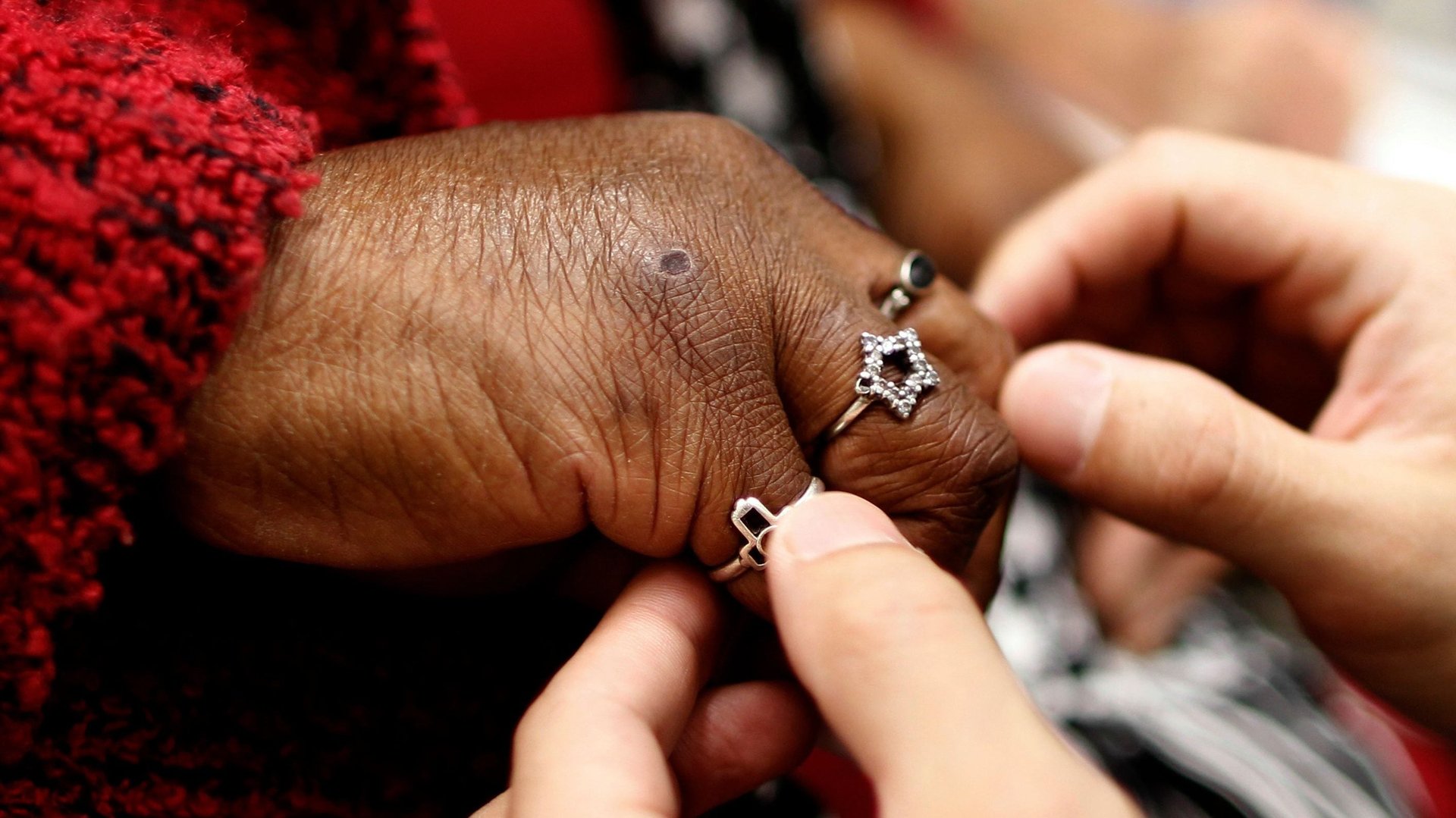New Alzheimer’s research highlights the need for diversity in medical studies
African Americans and Hispanics are more likely to develop Alzheimer’s disease than white adults. Yet scientists have no idea why this is the case.


African Americans and Hispanics are more likely to develop Alzheimer’s disease than white adults. Yet scientists have no idea why this is the case.
To try to figure it out, a team of researchers from Washington University in St. Louis recruited 1,255 participants, including over 170 African Americans (17% of total participants), and tracked them from 2004 through the end of 2015. (In the US, black Americans make up about 13.4% of the total population.) Over this time period, roughly a third of all participants went on to develop Alzheimer’s disease. The rates of Alzheimer’s were roughly the same in both black and white study participants, but, as the scientists announced in a new study published today (Jan. 7) it appears Alzheimer’s may have different genetic risk factors and chemical signatures in African Americans than it does in white populations.
Alzheimer’s is a progressive form of dementia characterized by detrimental buildups of misshapen amyloid plaques and tau proteins in the brain and surrounding fluid. Although both destroy brain cells, early research indicates that tau may be more responsible for cognitive decline than amyloid. In the recent study, the researchers found that African American participants across the board tended to have lower levels of tau than white participants. Yet, they developed Alzheimer’s at the same rate as the white participants.
Because having lower levels of tau didn’t seem to stop participants from developing Alzheimer’s disease, the researchers believe that perhaps, black people may be more susceptible to the effects of tau. African Americans are also more likely to have other known risk factors for Alzheimer’s, like vascular disease.
Additionally, the team found that even though form of the APOE gene known as APOE4 has been linked to higher risks of Alzheimer’s in white populations, African Americans who had APOE4 had lower levels of tau. APOE4 may not be the risk factor for African Americans that it is for white people, says John Morris, a neuroscientist at Washington University and lead author of the paper.
This work is preliminary, but suggests clinical implications down the line. If future work supports the idea that there are differences in the way Alzheimer’s manifests itself among different populations, treatments may need to be more diverse, too.
Figuring that out will require research institutions to do a better job recruiting African American participants (and people of color in general) for Alzheimer’s research. Morris estimates that only about 2% of people included studies looking at the efficacy of anti-amyloid drugs were black, even though some estimates suggest roughly 20% of Alzheimer’s patients are black.
Previous work has identified several known factors that have led to this research gap. Often, participants are recruited to clinical trials through specialty clinics, which may not be accessible to patients with low incomes or poor health insurance, who are disproportionately likely to be people of color. Research institutions may not communicate details of the trial to people of color, which makes them less likely to enroll. Additionally, some African Americans understandably harbor distrust against medical institutions after horrific, nonconsensual studies such as the Tuskegee Syphilis Study, in which the US federal government failed to treat black men for syphilis for decades to see the infection’s full effects.
Cases of dementia in minorities are expected to soar in the coming decades. Alzheimer’s research needs to quickly address possible differences among races in order to ensure all populations have access to effective treatment. “We now need to make our research cohorts representative of the populations so we can begin to ask and address these questions,” says Morris.